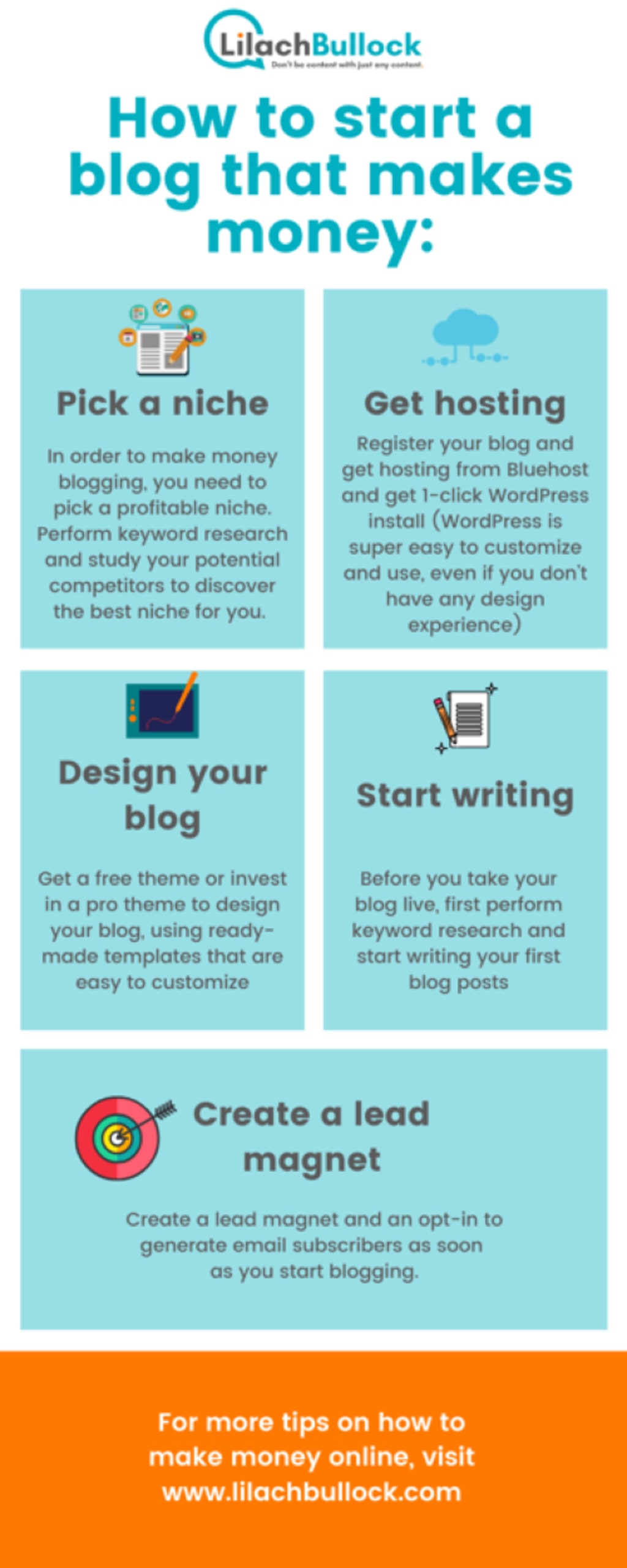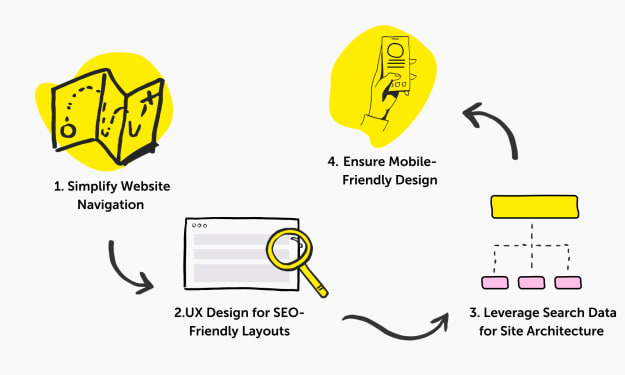How to Make Money Blogging: A Comprehensive Guide
In today's digital age, blogging has become an increasingly popular way to express oneself, share knowledge, and even earn a living. If you're wondering how to make money blogging, you've come to the right place. This comprehensive guide will walk you through the steps needed to turn your blog into a profitable online business. From choosing a niche to monetizing your content, we'll cover all the essential aspects of building a successful and lucrative blog.

Table 1: Outline of the Article
1. Introduction
2. Choosing a Niche
3. Setting up a Blog
4. Creating Engaging Content
5. Search Engine Optimization (SEO)
6. Monetizing Your Blog
7. Affiliate Marketing
8. Display Advertising
9. Sponsored Posts and Reviews
10. Creating and Selling Digital Products
11. Membership Sites and Subscriptions
12. Sponsored Content and Brand Collaborations
13. Building an Email List
14. Promoting Your Blog
15. Analyzing and Adjusting Strategies
16. Conclusion
17. FAQs
Table 2: Article - How to Make Money Blogging: A Comprehensive Guide
Introduction
In today's digital age, blogging has become an increasingly popular way to express oneself, share knowledge, and even earn a living. If you're wondering how to make money blogging, you've come to the right place. This comprehensive guide will walk you through the steps needed to turn your blog into a profitable online business. From choosing a niche to monetizing your content, we'll cover all the essential aspects of building a successful and lucrative blog.
1. Choosing a Niche
Finding the right niche for your blog is crucial. It's important to select a topic that you're passionate about and that has a viable audience. Research popular topics and identify a unique angle that you can bring to the table. Remember, the more specific your niche, the easier it will be to attract a loyal readership.
2. Setting up a Blog
Once you've identified your niche, it's time to set up your blog. Choose a reliable blogging platform like WordPress, and secure a domain name that reflects your brand. Invest in a user-friendly theme that complements your content and ensures a pleasant reading experience for your visitors. Don't forget to optimize your blog for mobile devices, as a growing number of users browse the internet on smartphones and tablets.
3. Creating Engaging Content
Compelling content is the backbone of any successful blog. Focus on providing value to your readers by crafting well-researched, informative, and engaging articles. Utilize a mix of text, images, and videos to make your content visually appealing. Be consistent with your publishing schedule and encourage interaction with your audience through comments and social media.
3.1 Building a Content Strategy
Developing a content strategy is essential for consistent growth. Plan your topics, outline your articles, and create an editorial calendar to stay organized. Identify keywords relevant to your niche and incorporate them naturally into your content to improve search engine rankings. Additionally, consider utilizing long-form content, as it tends to perform well in search results.
3.2 Incorporating Personal Stories
Sharing personal anecdotes and experiences can help you connect with your readers on a deeper level. People appreciate authenticity, so don't be afraid to infuse your writing with your unique voice. Personal stories can make your content relatable and memorable, setting you apart from other bloggers in your niche.
4. Search Engine Optimization (SEO)
To drive organic traffic to your blog, you need to optimize it for search engines. Conduct keyword research using tools like Google Keyword Planner and Moz's Keyword Explorer. Incorporate these keywords strategically into your content, headings, meta tags, and URLs. Focus on building high-quality backlinks from reputable websites to improve your blog's authority and visibility.
4.1 On-Page SEO (continued)
Pay attention to factors such as:
Title tags: Ensure your blog post titles are concise, descriptive, and include relevant keywords.
Meta descriptions: Write compelling meta descriptions that entice users to click through to your blog.
Heading tags: Use H1, H2, H3, and H4 heading tags to structure your content and include keywords where appropriate.
URL structure: Create clean and readable URLs that incorporate relevant keywords.
Image optimization: Optimize your images by using descriptive filenames and alt tags to improve accessibility and search engine visibility.
Internal linking: Link to other relevant posts within your blog to enhance navigation and encourage users to spend more time on your site.
Mobile optimization: Ensure your blog is mobile-friendly, as search engines prioritize mobile-friendly websites.
4.2 Off-Page SEO
Off-page SEO involves strategies to boost your blog's visibility and authority outside of your website. Some effective off-page SEO techniques include:
Building backlinks: Seek opportunities to acquire high-quality backlinks from reputable websites in your niche. This can be achieved through guest blogging, influencer collaborations, or submitting your content to industry directories.
Social media promotion: Leverage social media platforms to share your blog posts and engage with your audience. Encourage social sharing and participation to expand your reach.
Online networking: Connect with other bloggers, industry experts, and influencers in your niche. Engage in conversations, collaborate on projects, and exchange guest blogging opportunities to increase your blog's exposure.
Online communities and forums: Participate in relevant online communities and forums to establish yourself as an authority in your niche. Share valuable insights, answer questions, and include links to your blog when appropriate.
5. Monetizing Your Blog
Now that you've built a solid foundation for your blog, it's time to explore various monetization strategies. Here are some popular ways to make money blogging:
5.1 Affiliate Marketing
Affiliate marketing involves promoting products or services and earning a commission for each successful referral. Join affiliate programs related to your niche and incorporate affiliate links into your content. Write honest and informative reviews, recommend products, and disclose your affiliate partnerships to maintain transparency.
5.2 Display Advertising
Display advertising involves placing banner ads or text ads on your blog. Sign up for ad networks like Google AdSense or work with ad management platforms. Optimize ad placement for better visibility and consider using ad blockers to prevent intrusive or irrelevant ads.
5.3 Sponsored Posts and Reviews
Collaborate with brands and businesses in your niche to create sponsored content. Write unbiased reviews, share sponsored articles, or feature products in exchange for compensation. However, always disclose any sponsored content to maintain trust with your audience.
5.4 Creating and Selling Digital Products
Leverage your expertise and create digital products such as e-books, online courses, or templates. Market these products on your blog and provide value to your audience. Use platforms like Gumroad or Teachable to handle payment processing and delivery.
5.5 Membership Sites and Subscriptions
Offer premium content or exclusive access to a membership community for a recurring fee. Provide valuable content, expert advice, and exclusive perks to entice readers to become paying members.
5.6 Sponsored Content and Brand Collaborations
Partner with brands for sponsored content, collaborations, or brand ambassadorships. Align with brands that resonate with your audience and create authentic and engaging content that showcases the brand's products or services.
6. Building an Email List (continued)
Place opt-in forms strategically on your blog to encourage visitors to subscribe.
Send regular newsletters with valuable content, updates, and promotions to nurture your email subscribers.
Use email marketing tools like Mailchimp or ConvertKit to automate your email campaigns and track performance.
7. Promoting Your Blog
Promotion is key to attracting a wider audience to your blog. Here are some effective strategies to promote your blog:
Social media marketing: Utilize platforms like Facebook, Twitter, Instagram, and LinkedIn to share your blog posts, engage with your audience, and build a community around your blog.
Guest blogging: Write guest posts for other reputable blogs in your niche. This helps you reach a new audience and build backlinks to your blog.
Influencer collaborations: Collaborate with influencers or bloggers who have a similar target audience. This can involve guest posting, joint giveaways, or social media shoutouts.
Content syndication: Republish your content on platforms like Medium or LinkedIn Pulse to reach a wider audience. However, be mindful of duplicate content issues and include canonical tags to attribute the original source to your blog.
Online communities and forums: Actively participate in online communities, forums, and niche-specific groups. Provide valuable insights, answer questions, and share your blog posts when relevant.
8. Analyzing and Adjusting Strategies
Regularly analyze your blog's performance and make necessary adjustments to optimize your strategies. Some key metrics to monitor include:
Website traffic: Track the number of visitors, page views, and time spent on your blog using tools like Google Analytics.
Conversion rates: Monitor how many visitors are taking desired actions, such as subscribing to your email list, clicking on affiliate links, or purchasing products.
SEO rankings: Keep an eye on your blog's search engine rankings for target keywords and adjust your content and optimization strategies accordingly.
Social media engagement: Measure the engagement and reach of your social media posts to determine which types of content resonate best with your audience.
Feedback and comments: Pay attention to comments, feedback, and user interactions to gain insights into your readers' preferences and needs.
Conclusion
Making money blogging is a journey that requires dedication, perseverance, and continuous learning. By choosing the right niche, creating engaging content, optimizing for search engines, and exploring various monetization strategies, you can turn your blog into a profitable online business. Remember to focus on providing value to your audience and building genuine connections. With consistent effort and strategic implementation, you can achieve success in the world of blogging.
FAQs (Frequently Asked Questions)
1. How long does it take to make money from blogging?
The timeline for making money from blogging varies depending on factors such as niche, content quality, marketing efforts, and audience engagement. It can take several months to a year or more to start earning a significant income.
2. Do I need technical skills to start a blog?
While basic technical skills can be helpful, you don't need to be a tech expert to start a blog. Many user-friendly platforms and tools are available that make the process simple and accessible for beginners.
3. Can I monetize my blog without a large audience?
Yes, you can monetize your blog even with a smaller audience. Focus on providing high-quality content, engaging with your readers, and exploring niche-specific monetization strategies like affiliate marketing and digital products.
4. Is it necessary to be an expert in my niche to start a blog?
While expertise can certainly help, it's not a strict requirement. You can start a blog as a passionate learner and share your journey and experiences. Over time, as you gain knowledge and expertise, you can position yourself as an authority in your niche.
5. How do I stay motivated when starting a blog?
Maintaining motivation is crucial in the early stages of blogging. Set realistic goals, celebrate small wins, connect with other bloggers for support, and regularly remind yourself of the reasons why you started blogging in the first place.
About the Creator
ADITYA SALVE
My Name is Aditya Salve, and I am a beginner graphic designer with a growing interest in content writing. I have completed my training in Adobe Photoshop and After Effects, and I am currently learning 3ds Max to expand my skill






Comments
There are no comments for this story
Be the first to respond and start the conversation.